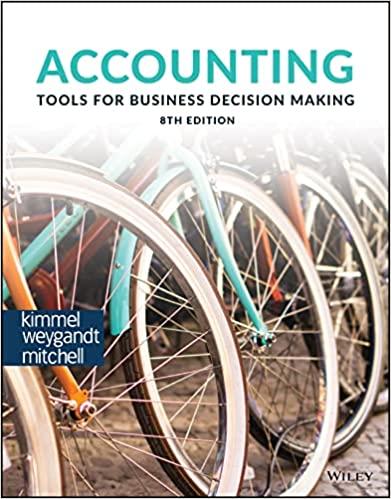Question
Depreciation and Depletion Chapter 12: Property plant and equipment Explain each ASAP 1. Which of the following principles best describes the conceptual rationale for the
Depreciation and Depletion
Chapter 12: Property plant and equipment
Explain each ASAP
1. Which of the following principles best describes the conceptual rationale for the methods of matching
depreciation expense with revenues?
a. Associating cause and effect
b. Systematic and rational allocation
c. Immediate recognition
d. Partial recognition
2. Which of the following most accurately reflects the concept of depreciation as used in accounting?
a. The process of charging the decline in value of an economic resource to income in the period in which the
benefit occurred.
b. The process of allocating the cost of tangible assets to expense in a systematic and rational
manner to those periods expected to benefit from the use of the asset.
c. A method of allocating asset cost to an expense account in a manner which closely matches the physical
deterioration of the tangible asset involved.
d. An accounting concept that allocates the portion of an asset used up during the year to the contra asset
account for the purpose of properly recording the fair market value of tangible assets.
3. The major difference between the service life of an asset and its physical life is that
a. service life refers to the time an asset will be used by a company and physical life refers to
how long the asset will last.
b. physical life is the life of an asset without consideration of residual value and service life requires the use
of residual value.
c. physical life is always longer than service life.
d. service life refers to the length of time an asset is of use to its original owner, while physical life refers to
how long the asset will be used by all owners.
4. The term "depreciable base," or "depreciation base," as it is used in accounting, refers to
a. the total amount to be charged (debited) to expense over an asset's useful life.
b. the cost of the asset less the related depreciation recorded to date.
c. the estimated fair value of the asset at the end of its useful life.
d. the acquisition cost of the asset.
5. Which of the following is a realistic assumption of the straight-line method of depreciation?
a. The asset's economic usefulness is the same each year.
b. The repair and maintenance expense is essentially the same each period.
c. The rate of return analysis is enhanced using the straight-line method.
d. Depreciation is a function of time rather than a function of usage.
6. The activity method of depreciation
a. is a variable charge approach.
b. assumes that depreciation is a function of the passage of time.
c. conceptually associates cost in terms of input measures.
d. All of these answer choices are correct.
7. Use of the double-declining balance method
a. results in a decreasing charge to depreciation expense.
b. means residual value is not deducted in computing the depreciation base.
c. means the book value should not be reduced below residual value.
d. All of these answer choices are correct.
8. Use of the sum-of-the-years'-digits method
a. results in residual value being ignored.
b. means the denominator is the years remaining at the beginning of the year.
c. means the book value should not be reduced below residual value.
d. All of these answer choices are correct.
9. When depreciation is computed for partial periods under a diminishing-charge depreciation method, it is
necessary to
a. charge a full year's depreciation to the year of acquisition.
b. determine depreciation expense for the full year and then prorate the expense between the
two periods involved.
c. use the straight-line method for the year in which the asset is sold or otherwise disposed of.
d. use a residual value equal to the first year's partial depreciation charge.
10. Depreciation is normally computed on the basis of the nearest
a. full month and to the nearest cent.
b. full month and to the nearest peso.
c. day and to the nearest cent.
d. day and to the nearest dollar.
Step by Step Solution
There are 3 Steps involved in it
Step: 1

Get Instant Access to Expert-Tailored Solutions
See step-by-step solutions with expert insights and AI powered tools for academic success
Step: 2

Step: 3

Ace Your Homework with AI
Get the answers you need in no time with our AI-driven, step-by-step assistance
Get Started


